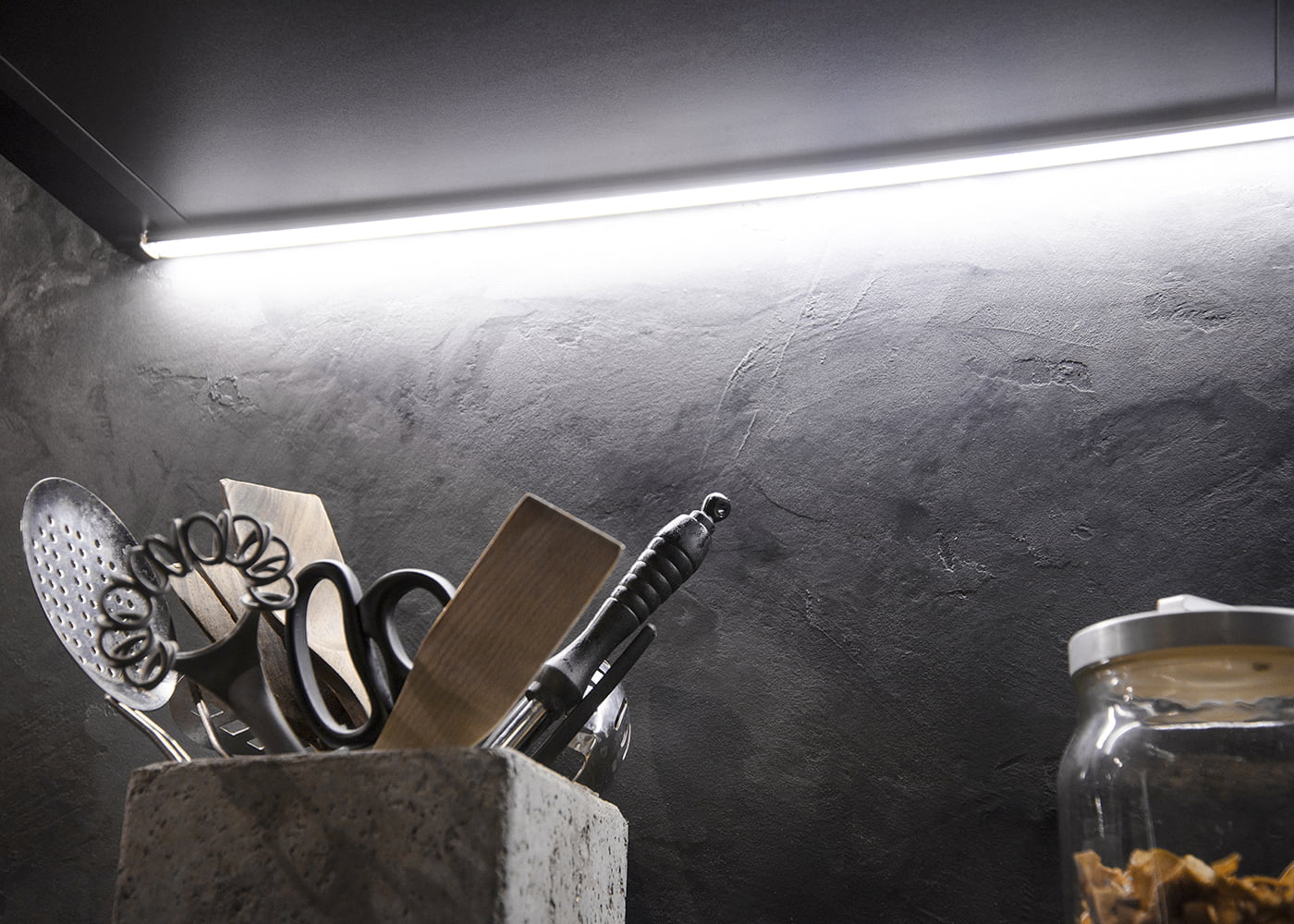The five most important things to know when designing LED strip lighting
LED strip lighting provides lighting suitable for many applications and uses. Like other lighting, it needs some planning. We’ve put together five general guidelines to help you make LED strip lighting a success.
1. Select the object to illuminate
Do you intend to light indirectly through a wall, floor or ceiling? Or is it necessary to get a uniform and efficient light from the LED strip with direct lighting? Indirect lighting is at its best as supplementary and mood lighting alongside general lighting.
Take into account that the further away the light is from the edges of the room, for example, the less light there is to illuminate the whole room. It should also be noted that indirect lighting, for example when reflected on an uneven surface, brings it into view and contributes to focusing attention on the surface to be illuminated.
Led strip lighting is a great addition in bathrooms, for example, behind a shower wall, and in saunas if installed low enough. In the kitchen, an illuminated LED strip on the worktop, on top of the cupboards and/or on the plinth level adds to the atmosphere and working comfort. In living rooms, LED strip lighting is suitable for example behind curtains, or around the room in a wall profile. In addition, bedrooms, wardrobes, staircases, work and leisure areas will also benefit from LED strip lighting. Led strip lighting is suitable for many styles, and also for the garden.
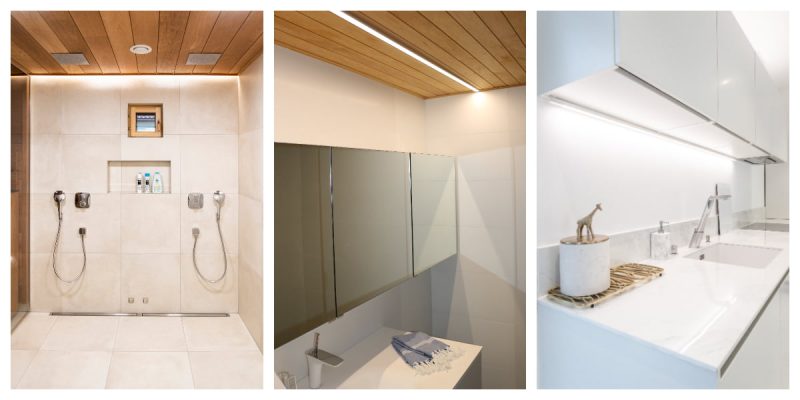
2. Choose LED strip lighting according to the purpose
The price of a Led strip is influenced, among other things, by its power. The more efficient the LED strip, often the more expensive it is. Other quality factors also affect the price, such as the colour rendering index (CRI) and uniformity of the individual LEDs in the LED strip, and the cut-off frequency.
In the basic data of the Led strip, the wattages are given either per metre W/m or per unit, e.g. 5 m. You should be careful at this point to get the tape you need. In addition, the LED strip indicates the voltage V, which is usually either 12V or 24V. This is the information you need when buying a suitable transformer for your LED strip. In addition, it is a good idea to find out at least the colour temperature (kelvin reading), moisture protection (IP rating) and the presence of a connecting cable.
A low-power LED strip such as 7.2 W/m is suitable for mood lighting. The higher the wattage (expressed in watts), the more light you get from the LED strip. Indirect installation, e.g. installing on the cornice of a sloping ceiling typically increases the need for a higher wattage LED strip, such as 14 W/m or more.
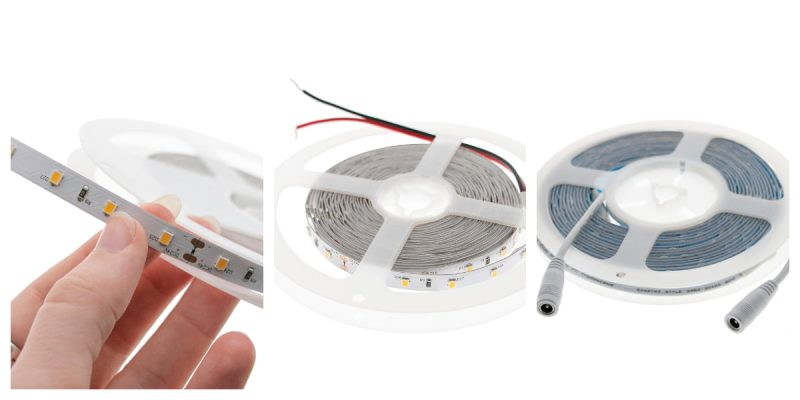
3. Aluminium profile protects the LED strip
The Led strip is made of thin copper, with small amounts of copper as conductors, so it is not very efficient at dissipating heat by itself. The more efficient the LED strip, the more heat it produces when switched on. If the temperature of the LED strip exceeds 50 degrees Celsius, its lifetime will start to shorten. In addition, dust accumulating on the LED strip makes it difficult for the strip to cool down.
The LED strip therefore needs an aluminium profile as a mounting partner, which extends the life of the LED strip, and whose plastic cover protects the LED strip from dust and splashes. The aluminium profile is very lightweight, rustproof and an excellent conductor of heat. In other words, the combination of aluminium and LED strip lighting results in long-lasting and durable LED strip lighting.
When buying an aluminium profile, you should pay attention to the unit length of the profile: it is sold in lengths of one metre or shorter, but also in lengths of e.g. 2.5 m long. In addition, the price may or may not include a protective plastic cover, fasteners for easy fixing, end plugs to finish the ends of the profile. Different types of aluminium profiles allow for the realisation of stunning, decorative and individual LED strip lighting. Profiles can typically also be painted.
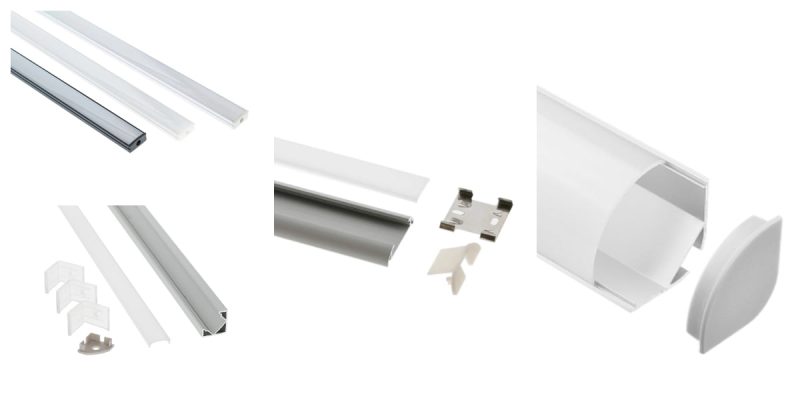
4. The size of the transformer for Led strip lighting is calculated according to the total load
The most important transformer characteristics for LED strip lighting are transformer voltage, load capacity, moisture protection rating, dimmability and pluggability. A transformer suitable for the LED strip provides DC voltage, either 12V or 24V.
Choose a transformer with the same voltage as the LED strip. The size of the transformer increases the larger the number of LED strips connected to it. As a rule of thumb, choose a transformer 15% larger than the total power of the LED strip. For example, if you have 5 metres of 7W LED strip, you should choose a transformer that can withstand a load of at least 40W. Also remember that the dimmability of the LED strip depends on the characteristics of the transformer. For colour and colour temperature adjustable LED strips you need a multi-channel transformer, plus and minus outputs alone are not enough for e.g. RGB+W colour adjustable LED strip.
If the transformer is installed in damp areas, the protection rating should be at least IP44, i.e. splash-proof. If you as a consumer want to connect the LED strip to the mains yourself, the transformer must have a mains plug ready. For many LED strip installations, it is a good idea to consult an electrician.
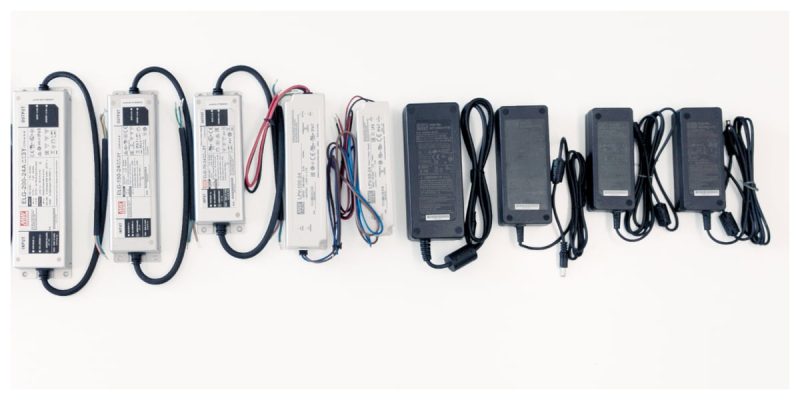
5. Led strip lighting can be wired and/or wireless
Led strip lighting can be connected to a wired wall switch in your home, so it can be used like any other lighting in your home. Led strip lighting can also be easily controlled wirelessly, eliminating the need to install new wall switches. Wireless wall-button-style switches are often also dimmers, allowing the LED strip to be used in a variety of ways. There are also remote controls for the Led strip, which can be used either as the sole control, or as a remote control to complement the wall button control.
For example, if the LED strip has colour temperature control or colour change features, you should choose a control that is suitable for adjusting these features. If desired, the lighting control can be connected to a home automation system, for example, making different programming possible, for example in a Wi-Fi network. These require suitable equipment for both the transformer and the lighting control.
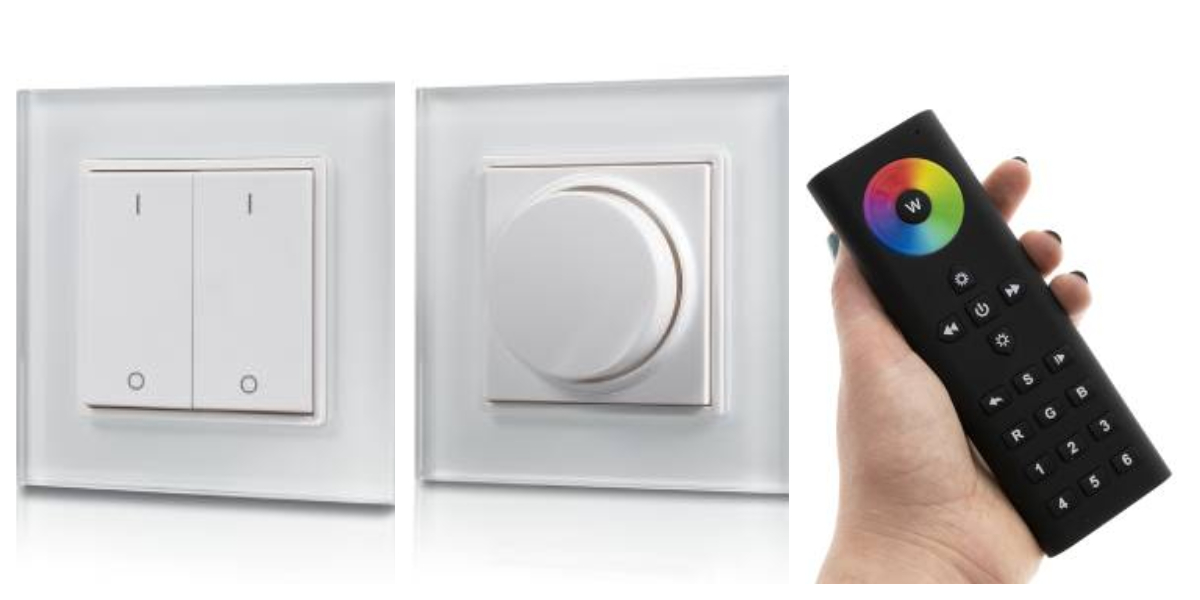
Welcome to visit our showroom in Vantaa, Koivuhakka, Mesikukantie 16. We also do lighting design and bespoke LED strip lighting in our LedShop.
The products can be found by product category in our online shop as follows:
Led strips on page: https://ledstore.fi/led-nauhat
Aluminium profiles on our website: https://ledstore.fi/alumiini-profiilit-led-nauhoille
Transformers in our online shop: https://ledstore.fi/led-muuntajat
Led lighting control, wireless and wired: https://ledstore.fi/langaton-ohjaus
We are happy to help you choose the right products!

